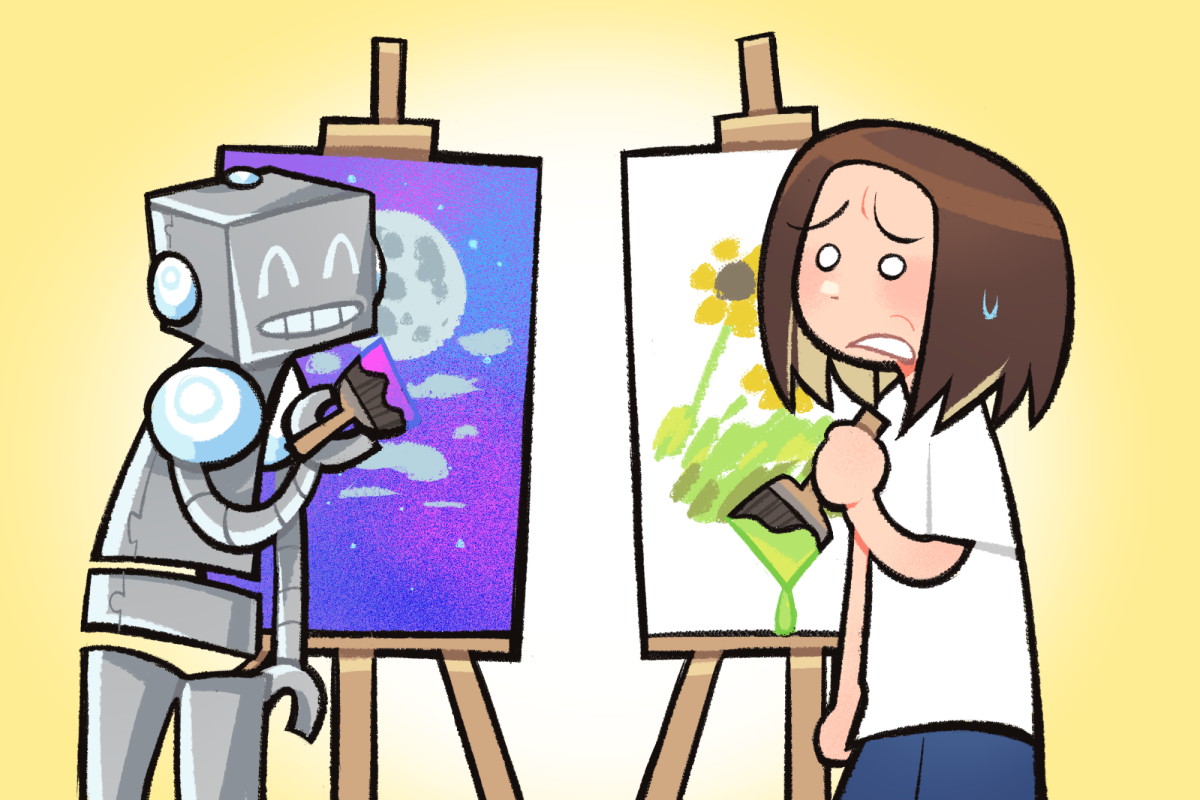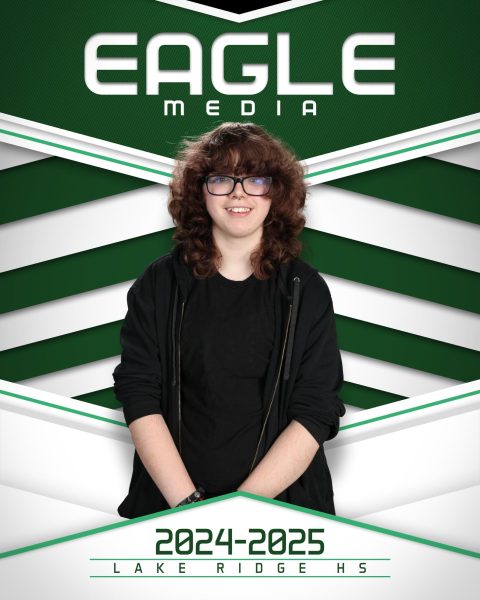With AI technology advancements, AI tools are able to create more than words. Images, videos, and music can all be created by the simple typing of a prompt. This sparked controversy in artist spaces as many people debated the quality and authenticity of AI created works. Artists also worry that their jobs may be replaced by AI.
AI, or Artificial Intelligence, uses public information on the internet to train computer programs. These programs simulate human learning and can complete human tasks such as identifying objects, creating text, and solving advanced problems. Recent advancements have allowed AI to create media by analyzing images and videos posted online.
AI tools are becoming more popular, whether they help with schoolwork, write text, or create images and videos. Senior Ethan Tran believes AI’s popularity is a double-edged sword.
“I’m neutral about it, because it definitely helps us with a lot of things and it sheds light on unethical things. I do believe it can be dangerous,” Tran said.
AI art generators use art pieces posted on the internet to create new images. This makes AI created art pieces similar to ones made by humans, but there are key differences. Junior Claire Huddelstone believes the main difference between AI and human-made art is quality.
“You can get stuff that is made by AI, and it will maybe look the same, but artists will usually have better quality in their art, and their art is made to usually last long,” Huddleston said.
While most people use AI as a replacement for human artists, it is not limited to that purpose. Art teacher Stacy Bailey thinks AI can be a useful tool for visual artists.
“It seems cool to be able to think of really weird ideas and see what it can come up with. I understand how it could be useful for references,” said Bailey. “I know that in art history, every time there’s new technology in art, there’s a huge backlash and most artists reject it or don’t like it. Like photography was widely rejected for a very long time as an art form. People thought it was not art. It was too easy to do, and now it’s an accepted art form.”
Other artists view AI art as a threat to the appreciation of human-made art. Huddleston views AI art as fraudulent.
“I actually hate when people call it AI art, like that’s so normalized now, because it’s not art. I think the thing about art is that it has humanity to it, and I think when we have something that humans aren’t making and then we call it art, it’s not art,” said Huddleston. “It’s a tough thing because, you know, there are great things that AI has done for us, but I also think that it almost decreases the value of art, and especially with kids our age, we start to lose the appreciation for art.”
Anyone with internet access can use AI tools to create art and sell it for a large profit. Huddleston believes this hurts artists and cheapens the value of art as a whole.
“There’s so much thought that goes behind it. Art is a response to things that are happening around the artist. Art is so special to us, and it’s something that we need to hold with so much value, and selling AI art just diminishes that,” Huddleston said.
Additionally, people selling AI-created images can set their prices at a much lower price than human artists. Huddleston has seen this drive customers away from artists online and in real life.
“I see it online all the time, and it’s honestly really sad because being an artist is already such a hard job and hard to make money off of. Doing commissions like that takes a lot of work to get out there and get your art sold. Even my relatives, who are artists, have trouble making commissions because people just don’t want to buy art anymore, because if you can get it for cheaper with AI then you would,” Huddleston said.
However, artists are finding ways to combat the rise of AI art. Unions by and for artists have been created to help artists keep their jobs. Huddleston hopes these unions can help people value human artists more.
“That makes me excited because I think it’s important to fight back against people who are just trying to make money off of whatever they can,” Huddleston said.
AI tools only pull from the information available to them on the internet which can lead to false information being circulated and repeated. Bailey feels as though AI tools can restrict how people think and consume information.
“It teaches people that they don’t have to use their own brain. It’s too easy. We’re just using technology’s information that nobody actually thought of. It trains us to just consume information without critically thinking about it,” Bailey said.
Many worry that consumers will prefer AI-created art, but Korfe believes AI lacks the intention that humans have while creating art.
“I could see people preferring AI, but I don’t think people with taste would prefer AI because people that listen to music and look at art are looking at the story behind what they see. I think knowing that it’s fake and not behind someone’s heart ruins the art,” Korfe said.
“Support artists, support people who make this endeavor into the artist realm. Spread awareness about it. These are people’s jobs, and we want people to do what they love and still be able to make money off of that. So just spread awareness and buy real art made by real artists,” Huddleston said. “Go to museums, learn how to look at art and find the value in it because art is for everybody.”


